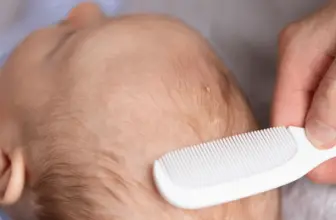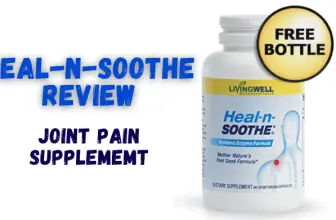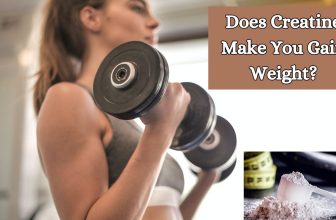How Long Does Muscle Soreness Last after Exercise?
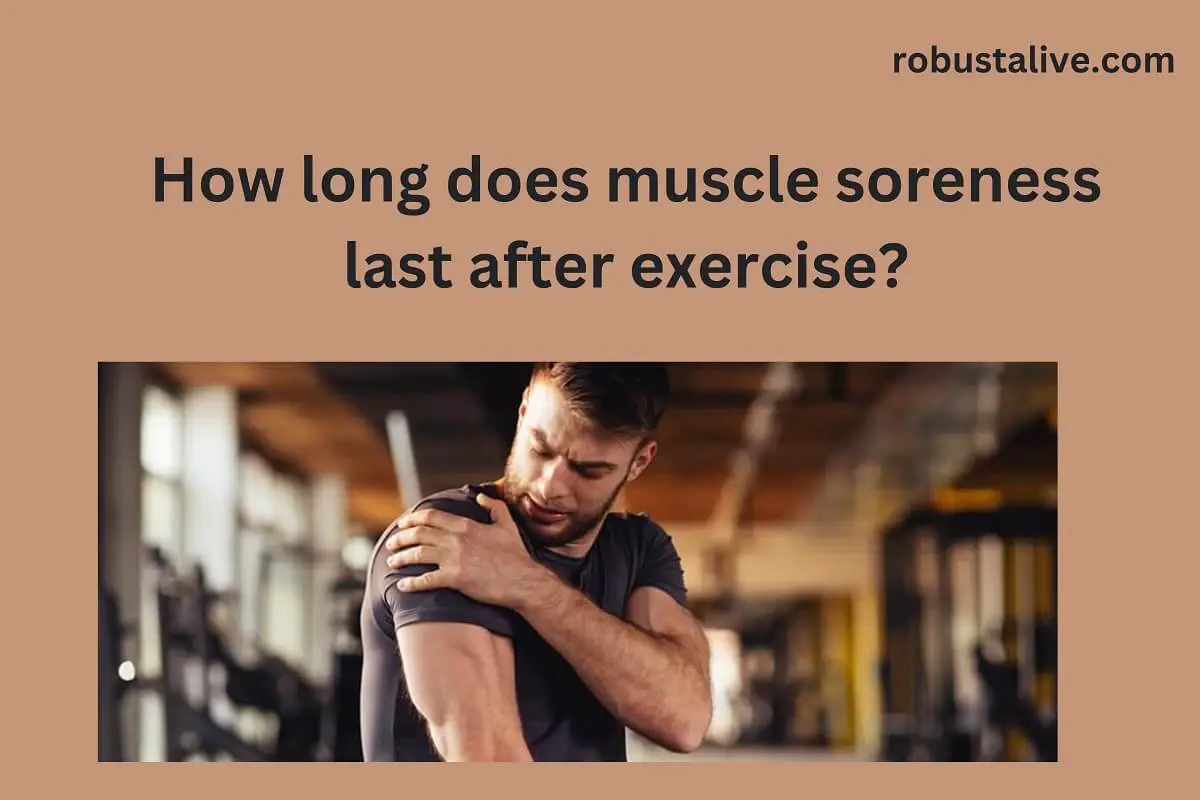
You must have read this wise quote many times; “No pain, no gain.”
Most of us know the benefits of all sorts of exercises. Strength training benefits muscle building, cardio improves heart health and burns extra fat, and these exercises boost muscles, boost metabolism, and prevent bone injuries.
All these benefits are essential to living a healthy and active life. But when you are working hard for these benefits, do you have to put up with the pain afterward? If yes, how long does muscle soreness last after exercise?
During exercise, our primary goal is to challenge our muscles. Of course, we should focus on regardless of gender and age. According to the health fitness coordinators, there are many ways by which we can overcome the severity of the soreness experience. And once you start doing exercises regularly, you will not feel any pain later on.
In this article, our primary focus is to answer your two most frequently asked questions; how long do muscle severances last after exercise, and how to overcome it? So without any delay, let’s dig into it.
Is it DOMS?
The American College of Sports and Medicine states that DOMS generally occurs 12 to 24 hours after a workout. The pain usually increases after 1 to 3 days of exercise, which eases up.
Here are a few common DOMS symptoms that you may experience if you have DOMS.
- Muscle fatigue
- Muscles become tender
- Swelling in the affected area
- Reduced motion range due to pain and fitness while moving
- Short-term muscle strength loss
Causes
During muscle activity, the body muscle show contraction and relaxation to support muscle movements. Repetitive and prolonged activity over-exerts the muscles and leads to muscle soreness. Muscle overexertion and soreness often occur after physical activity that is more than usual. It may occur due to the following reasons.
- Doing the high intense workout
- Introducing new exercises to the daily routine
- Exercising more than you usually do
- Longer workouts
Muscle soreness usually occurs several hours after an exercise or strenuous physical activity. That’s the main reason behind its name. DOMS means “Delayed onset muscle soreness .”Despite the regular physical activity, some people still experience DOMS at some points.
We still don’t know the exact cause behind DOMS. According to the experts, it may occur due to microscopic cuts in the muscle fiber. These muscle fibers get injured during exercise, and many experts believe this muscle soreness results from healing. DOMS is not because of lactic acid accumulation in muscles.
Muscle soreness types

Graphics Credit: Robustalive.com
There can be different sorts of muscle soreness you can experience. The DOMS I mentioned above is an actual injury or acute muscle soreness. Acute muscle soreness is the burning feeling during exercise. At the same time, the DOMS was the muscle soreness that reared up after the workout.
You will feel acute muscle soreness while you are working out. For example, if you are doing the overhead presses, you will experience intense pressure in your triceps and shoulders. It will tell you that you won’t be able to do another rep.
Both DOMS and acute muscle soreness are more comprehensive than an actual injury. For example, your discomfort and pain tend to be more focused during the injury. Pain and an abnormal feeling will usually be a specific movement and a different type of pain. It will be precise and sharper.
An injury pain usually triggers a specific motion. For example, you may not feel the pain in your arm until you rotate it in a particular direction. Another way to tell the type of pain you are experiencing is by noticing the pain. If you feel the pain in both quads after a workout, then it’s probably DOMS. Mostly in DOMS cases, you will start feeling better after the 3rd day. Whereas, if it lasts more than a week, it’s probably an injury. It will be good to visit your doctor or physiotherapist if your pain is not easing after four days.
How long does it last?
According to ACSM, muscle soreness begins 12 to 24 hours after exercise. Then muscle soreness increases after 24 to 72 hours after the intense workout. After 72 hours, it usually goes away on its own.
The level of soreness a person feels depends upon many things, like frequency, type, and duration of the exercise. It’s a little uncomfortable to do exercise with muscle soreness. Sharp pains immediately after exercise can signify injuries, strains, and sprains.
Sharp pains instantly after exercise can signify injuries such as sprains and strains. These injuries result from muscles, ligaments, and tendons getting torn and stretched and are usually more severe than DOMS, possibly requiring medical attention.
How to relieve muscle soreness after a workout?
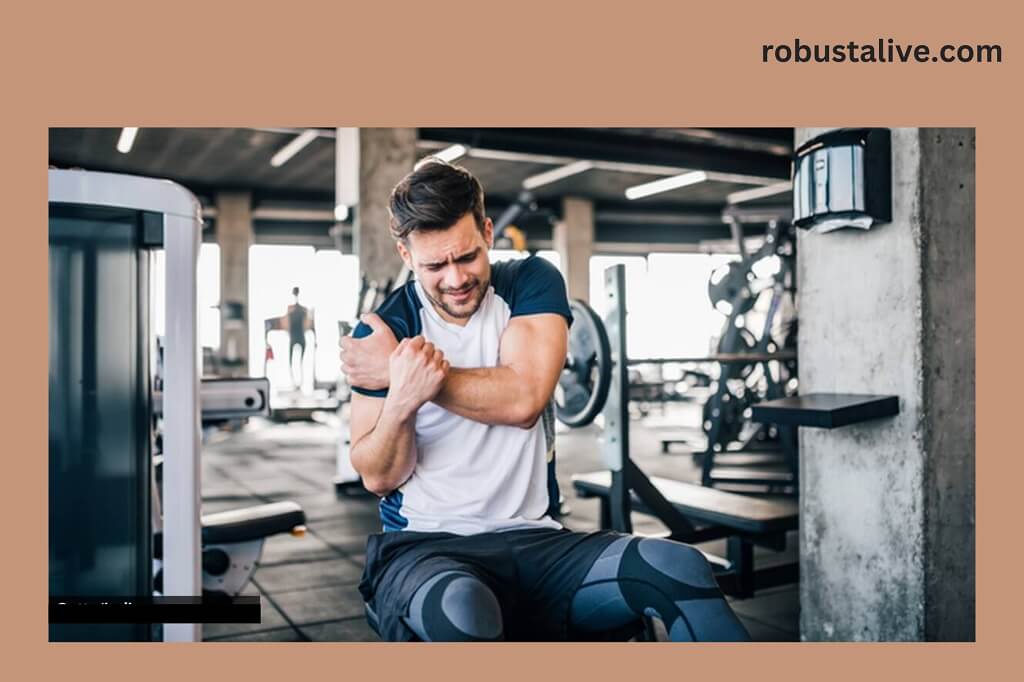
Graphics Credit: Robustalive.com
If your goal is to build muscles and strength, you can expect some soreness. But how long does muscle soreness last after exercise, and how to relieve it? DOMS is a natural process that indicates your muscles are getting stronger. So it’s not harmful but can be a little painful.
Fortunately, we can do many things to relieve our muscle soreness. Here are the seven of them.
-
Get moving
Whether you believe it or not, keeping the movement is the best way to eliminate muscle soreness. You can move by simple stretching, yoga, foam rolling, active recovery, or light cardio.
-
Make sure to warm up
Warming up your muscles before any exercise is essential as it ensures you are ready to go through the challenges. Before starting any workout, warm them up for a few minutes.
Make slow progress toward the new program.
Your muscles don’t get any benefit when you go straight from 0 to 60. Give them the time they require to make further progress. By doing this, you will not have to face muscle soreness severity. Whenever you decide to increase workout intensity, make sure to take it slow to avoid soreness.
Soak in a salt bath
Soaking your muscles in moderately warm water mixed with Epsom salt relieves pain and relaxes muscles.
Take a pain reliever
It will not speed up your muscle healing process, but it will aid in relieving the related discomfort.
Recovery time
During muscle soreness, it’s vital to give them proper time to rest; otherwise, it can get worse. When you are in the active recovery stage, make sure to have a good rest day. Besides rest days, hydration and sleep are vital for recovery.
Split day routine
If you like exercising daily, try splitting your workouts into muscle groups. For example, One day is a leg day, and the next day, arms. It will also ensure that your muscle is getting enough time for recovery.
Is DOMS a sign of a good workout?
Some say; if your muscles are super sore after a workout, you are gaining fitness gains. But is this even true?
No. When you start pushing over your limit or a new exercise routine, your muscles will likely get sore. But when you keep up with your training, your muscles get used to it; how long does muscle soreness last after exercise? You will not feel super sore after your workout, but it doesn’t mean you aren’t doing it correctly or missing the benefits.
How sore is too sore?
Sometimes the muscle soreness feels too sore that you won’t be able to continue the exercise. As I mentioned above, by continuous movement, you will be able to relieve your muscles. So instead of entirely skipping your workout, do light exercises. It will improve the blood flow, which will automatically reduce the symptoms.
But what if the sore is too sore from exercising? If your muscle soreness persists for over three days, you have overdone your muscles. Pushing yourself too hard and overdoing the exercise can cause muscle soreness. But, prolonged muscle soreness can be a sign of an injury.
If your soreness persists for more than four days and you still feel the sharp pain,n try limiting your mobility. Please consult your doctor, as it can be more than muscle soreness. You should be cautious of exercise only if your muscle pain indicates the injury.
When to see a doctor?
DOMS rarely requires a doctor’s visit. American Council on Sports Medicine suggests visiting your doctor if you are experiencing severe muscle soreness that hinders your daily activity.
Visit your doctor immediately if:
- If your muscle soreness lasts for more than five days
- Have severe swelling in legs and arms
- Your urine gets abnormally dark
Muscle spasms, tingling, and sharp pain differ from muscle soreness. Muscle soreness is a dull ache in the affected areas’ muscles. If you feel any of the symptoms mentioned above, consult with your doctor immediately.
Conclusion
More than regular physical activity often leads to DOMS, and its symptoms generally appear after several hours of exercise. Usually, it lasts up to 72 hours. DOMS is uncomfortable but often doesn’t require any medical attention.
You can elevate the pain by following the prevention methods mentioned above or ignoring it. But if the pain persists for more than 4 days, then immediately consult your doctor. The onset of pain can be a symptom of a severe injury like a sprain or strain.
Frequently Asked Questions (FAQs) about How Long Does Muscle Soreness Last after Exercise?
Is it ok to exercise with muscle soreness?
You can do any exercise as long as it doesn’t affect your muscle movement in a way that makes the muscle soreness worse. Muscle soreness makes it challenging to exercise, but the more you do it, the less you feel the pain. It’s temporary, so don’t let it affect the routine.
Why are my muscles sore even after four days?
Muscle soreness that results from a workout is known as DOMS. It generally lasts from 1 to 3 days. But if the pain and soreness last longer than 5 days, it can signify severe muscle injury like a sprain. Consult your doctor immediately to avoid any further complications.
How long does muscle soreness last after exercise?
Muscle soreness starts within 24 hours after a workout and usually lasts 1 to 3 days. The soreness usually goes away on its own. Muscle healing shows that it’s getting stronger and ready for the next level of fitness workout.
How to recover your sore muscles?
Here are a few ways that can benefit in relieving muscle soreness.
- Muscle massage
- Rest
- Gentle stretching
- Icing to reduce inflammation
- Heat benefits the blood flow in muscles.
- Over-the-counter medicines like anti-inflammatory drugs
Does muscle soreness after exercise mean muscle growth?
Muscle soreness relates to muscle damage, which is not essential for muscle growth. Your muscles will not get sore after a specific period as they get used to the workout. But it doesn’t mean that your muscles have stopped growing.
Are my muscles growing if they aren’t sore?
Yes. Just because you are not feeling the muscle soreness with the same intensity as before doesn’t mean it has stopped growing. A human body is a fantastic machine that adopts him with whatever changes you present.
References
https://www.everydayhealth.com/fitness/quick-fixes-for-sore-muscles.aspx
https://www.hopkinsmedicine.org/orthopaedic-surgery/about-us/ask-the-experts/pain.html
https://www.webmd.com/fitness-exercise/features/sore-muscles-dont-stop-exercising
https://www.webmd.com/fitness-exercise/features/sore-muscles-after-workout
https://www.houstonmethodist.org/blog/articles/2021/sep/muscle-soreness-after-a-workout-can-it-be-prevented/
https://www.medicalnewstoday.com/articles/327138
https://www.self.com/story/how-deal-post-workout-muscle-soreness-really-painful


